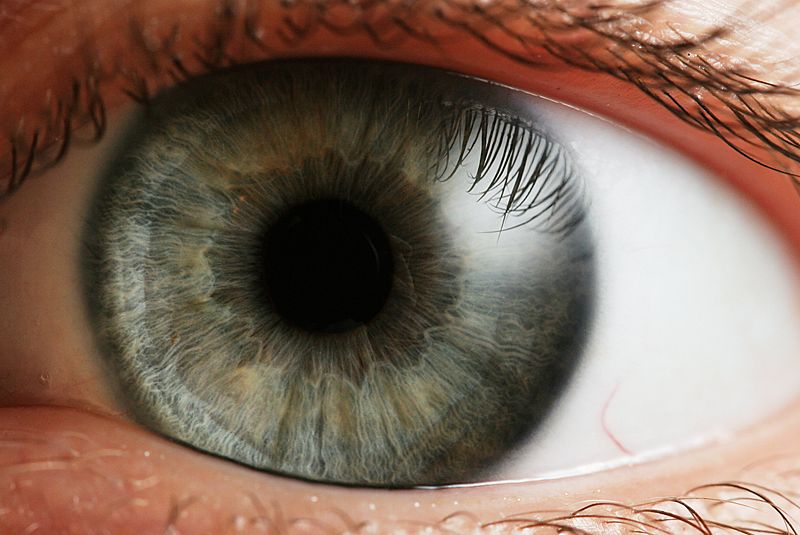Gene Therapy for Inherited Blindness
Interview with
Rob - What we've been doing this week is very exciting. We've actually used gene therapy to attempt to correct an inherited eye disease, a type of retinitis pigmentosa. We've done this on a 63-year-old gentleman - Jonathan Wyatt - who suffers from a condition known as choroideraemia. Choroideraemia is one of those inherited diseases that affects men because it's on the X chromosome. It presents in childhood and initially starts with people losing their night vision and then gradually, as they get into their teens, they notice that the peripheral vision disappears and they eventually develop tunnel vision. So they can just see a tiny island of vision in the centre and then around about the age of between 40 and 50, that very small island of vision then disappears. Mr. Wyatt only has a tiny bit of vision left in the very centre of his eyesight and the operation we have done is using gene therapy. We have tried to replace the gene that's missing in him in order to preserve that little island of vision and keep it alive.
Chris - Why does this condition happen in the first place? Do we understand  what the disease process is that makes that progressive loss of vision happen?
what the disease process is that makes that progressive loss of vision happen?
Rob - Yes absolutely, effectively the protein that is missing is involved in moving vesicles around cells. Vesicles are like little compartments that move around carrying proteins from one part of the cell to another. The actual protein missing in choroideraemia is a protein that somehow labels the vesicle so that they know where to go so that they could be transported correctly.
Chris - And why does that lead to the pattern of visual loss that the patients have?
Rob - That is something which we're not entirely sure of, but it seems to be that this particular protein is absolutely critical in the retina in the eye. There is another protein which can take on the role of labelling these vesicles in other cells in the body, but in the eye, this other protein doesn't work as well and so, the patients do have the effect. It's interesting because it is a disease, like many genetic diseases, which is only manifested in the eye, and doesn't really have any effect elsewhere in the body.
Chris - So how have you tried to tackle it?
Rob - What we've done is we've engineered an adeno-associated viral vector which is a very small viral particle and inside that, we've packaged the missing gene. We like this particular viral vector because we do have good safety data on it and we know that it can be injected into the retina without causing any significant side effects. We're using the vector very much like a Trojan horse to get through the cell's defences and then open up inside and release the gene that's missing in choroideraemia into the cells. Hopefully, that will be sufficient to allow the cells then to continue functioning normally, and keep them alive.
Chris - Which cells is it going into?
Rob - Well we're targeting the lining of the retina, which is known as the retinal pigment epithelium. But also, we have made a fairly significant step forward in gene therapy in the eye, in that we have modified the vector slightly so that it infects the light sensitive cells, the photoreceptors which line the eye, and in order to do that we haven't changed the shape of the virus, we have actually changed the DNA sequence a bit so that the virus and the gene is expressed within the photoreceptors, particularly the rods which are those responsible for night vision in addition to the lining of the eye.
Chris - Does this mean that the progression of the disease is arrested - that the vision will stop getting any worse - or does it mean that actually, the vision can recover in affected people?
Rob - Well again, that is a very good question and probably we will only know for sure in the midst of time when we've had the chance to see the results. But what we predict to happen is we think that the disease will be arrested because it's a relatively slow degeneration and we think that even a small amount of the protein expressed would keep the cells alive. But what we've noticed is, because children, boys, lose their night vision before there's any significant degeneration of the retina, we think that there is some functional defect. In other words, that the actual rod photoreceptors themselves do not work as well in the absence of this protein. We've designed our study so that we can do quite complicated visual tests in the aftermath of the gene therapy to see if this night vision returns. And of course, what's really nice about working in the eye is that we've treated one eye in all our patients, we can then compare the treated eye to the other eye which hasn't received the vector. So we'll be sure whether or not the effect has worked.
Chris - And practically speaking, how do you actually get the virus into the eye?
Rob - Well the virus goes in through quite a complicated procedure where we make three small incisions in the white of the eye which is just behind the coloured part - the iris - and we pass these probes into the eye. We remove the jelly from the back of the eye first of all and then we inject fluid underneath the retina through a very, ve ry small needle which is actually thinner than a human hair. [This fluid ] lifts the retina up and it detaches it. It would be a bit like operating inside a tyre where we're actually trying to remove the inner tube and we want to inject the viral suspension between the inner tube and the outer wall of the tyre. So we have to make sure that we don't make too big a hole in the inner tube and also, we need to separate the inner tube from the outer wall of the tyre. One of the difficult things which we haven't been able to predict is how these patients with choroideraemia, whether or not these two layers of the retina will be stuck together because of course, with all the inflammation in the cells that's been going on throughout their lives, it's possible that the retina will be quite heavily struck together. And this is a bit unpredictable, but fortunately, in the case of Mr. Wyatt, the first patient we treated this week, the retina separated very cleanly and we were able to inject the virus into the correct compartment without any complications.
ry small needle which is actually thinner than a human hair. [This fluid ] lifts the retina up and it detaches it. It would be a bit like operating inside a tyre where we're actually trying to remove the inner tube and we want to inject the viral suspension between the inner tube and the outer wall of the tyre. So we have to make sure that we don't make too big a hole in the inner tube and also, we need to separate the inner tube from the outer wall of the tyre. One of the difficult things which we haven't been able to predict is how these patients with choroideraemia, whether or not these two layers of the retina will be stuck together because of course, with all the inflammation in the cells that's been going on throughout their lives, it's possible that the retina will be quite heavily struck together. And this is a bit unpredictable, but fortunately, in the case of Mr. Wyatt, the first patient we treated this week, the retina separated very cleanly and we were able to inject the virus into the correct compartment without any complications.
Chris - So when you're doing all this, are you physically watching what's happening by looking through the pupil at the back of the eye so you can see where these needles are going and what the effect is of the injections?
Rob - Yes. We have a very high-powered microscope which has a series of lenses on it. Most importantly is that it inverts the image, so when we look into the eye, we are seeing the image the correct way around. Otherwise, we'd have to do everything back to front which would be quite difficult. In the operation itself, what I have in my left hand is a tube which like a torch, a very high-powered torch, which I use to light up the back of the eye. In my right hand I have the actual needle with the very small tip which goes under the retina. By looking down the microscope, I can actually see myself moving these two instruments around. My feet are controlling various other parts of the microscope and the injection system which allows me to deliver the fluid into the retina without having to fumble around with another hand.
Chris - So not too much coffee in the morning before you do that. What are the outcome measures? How will you follow up this initial patient and then the others in order to test whether or not it's working and when will you know?
Rob - Well I think the main thing that we're interested in is first, that the patient comes to no harm and that his vision returns, and that the operation itself does not cause damage, and the viruses are delivered without any problems. I can say fairly confidently now that that is the case indeed and he was interviewed live on the BBC News on Thursday evening and gave a very good account of having good vision in the eye, and that's very reassuring. The second stage will then be to look at his night vision and also to have a look at his retinal function. We do that with a machine called a microperimeter which is a machine which shines a light in different parts of the vision, and the patient will then press a button when he or she sees the light. The light that's shone in the eye is also tracked with an infrared camera, so a computer knows exactly where on the retina the light is being shone and can correlate that with the patient's responses. In the long run, we know that this condition has a progression of about 10% per year in terms of reduction and shrinkage in the size of the retina and we can measure that on the back of the eye. So by measuring the retina that we treat, we have a very objective test about whether or not the disease progression has been halted because of course, we can compare the treated retina to the untreated eye on the other side, where we would expect that 10% per year shrinkage to continue.
- Previous Foetal Gene Therapy
- Next Fossil Proteins - Planet Earth Online










Comments
Add a comment